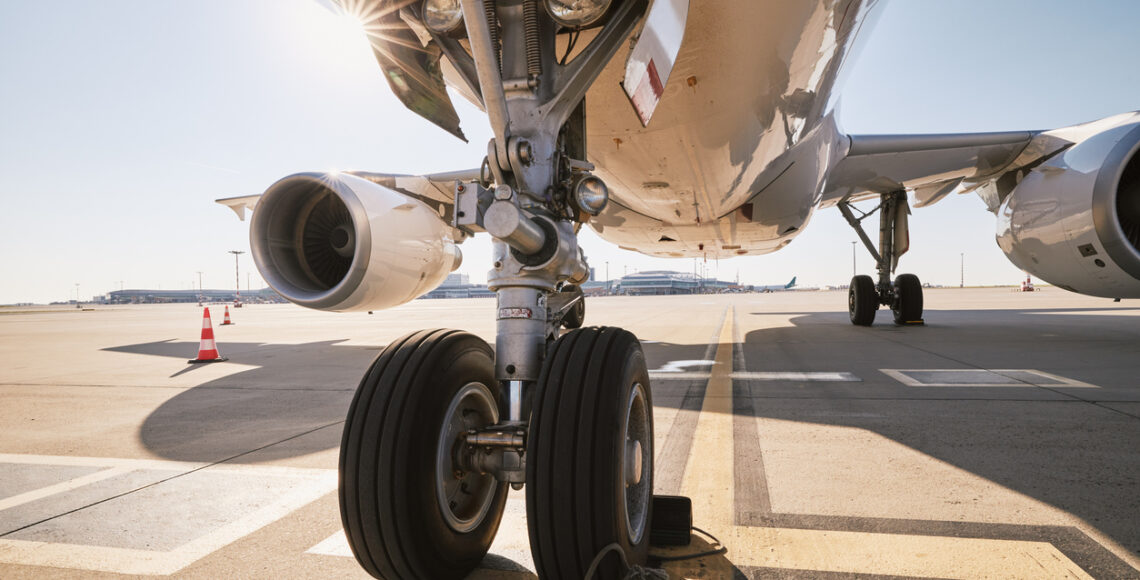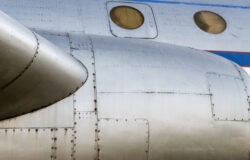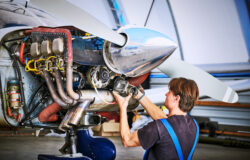A standard Boeing 747 Jumbo Jet weighs around 182,000 kg (402,000 lbs) — and that’s without passengers, fuel, and cargo. At its highest capacity, the weight of a Boeing 747 can reach 360,000 kg, (800,000 lbs), but its maximum landing weight is only 260,000 kg (574,000 lbs). In the context of manufacturing, this means that every gram counts. It’s exactly why aircraft weight reduction is so essential to the aerospace industry.
Optimizing key components like wheel brakes and landing gear not only helps in reducing the overall weight of an aircraft but also contributes to increased payload capacity and improved flight dynamics. For manufacturers, achieving these goals requires a careful balance of material selection, precision manufacturing, and innovative design.
Achieving Aircraft Weight Reduction with Optimized Designs
Designing wheel brakes and landing gear with aircraft weight reduction in mind is critical for improving efficiency and performance. These components must be able to support the full weight of the aircraft during landing and taxiing while ensuring maximum safety.
The most innovative part designs focus on minimizing material use without compromising the strength, durability, or functionality of these crucial components. This typically involves utilizing advanced engineering techniques to identify and eliminate excess material, leading to a lighter, robust design.
To accomplish this, metal parts manufacturers implement topology optimization to streamline the design of landing gear struts and brake assemblies. This helps ensure that excess material is removed from non-critical areas while maintaining structural integrity. For instance, hollowing out sections of the landing gear can reduce weight while still providing the necessary support during impact and taxiing. Similarly, wheel brake components are designed to optimize thermal dissipation and strength, using minimal material to achieve the same performance as heavier counterparts. Close collaboration between design engineers and aerospace manufacturers ensures that these components meet stringent industry standards while achieving aircraft weight reduction goals.
Innovative Materials for Aircraft Weight Reduction
Material selection for wheel brakes and landing gear is a critical factor in achieving aircraft weight reduction without sacrificing safety or performance. Innovative materials such as high-strength aluminum, titanium alloys, and advanced composites offer the strength and durability required for these components while significantly reducing their weight. These materials also help enhance fuel efficiency, increase payload capacity, and extend the service life of the aircraft.
One of the most popular materials is titanium. Known for being as strong as steel but 45% lighter, titanium and its alloys are the go-to for landing gear components due to an exceptional strength-to-weight ratio and resistance to corrosion.
High-strength aluminum is another material that is common in wheel brake assemblies, where its lightweight properties and superior thermal conductivity help manage the intense heat generated during braking.
By carefully selecting these materials for the proper applications, manufacturers can produce components that significantly reduce aircraft weight while maintaining or even enhancing overall performance and safety.
The Role of Precision Manufacturing in Weight Reduction
Precision manufacturing is essential for producing wheel brakes and landing gear that meet the strict weight and performance requirements of modern aircraft. These components must be manufactured to exact specifications, with tight tolerances that ensure consistency and reliability under extreme conditions. Advanced techniques such as CNC machining, metal stamping, and specialized fabrication are crucial for achieving the precision needed to reduce weight without compromising strength.
For instance, CNC machining is used to create complex, lightweight components for wheel brakes and landing gear with exacting tolerances. This precision allows for the efficient use of advanced materials, ensuring that each component contributes to overall aircraft weight reduction while maintaining the necessary structural integrity.
Metal stamping, similarly, is employed to produce thin, high-strength parts for brake assemblies, maximizing material efficiency and reducing weight.
And specialized fabrication techniques are used to assemble these components into larger systems that are both lightweight and robust. By leveraging these precision manufacturing capabilities, manufacturers can deliver wheel brakes and landing gear that meet the stringent demands of the aerospace industry, helping to optimize aircraft performance and efficiency.
Achieve Aircraft Weight Reduction with OGS
At OGS Industries, we understand the critical role that weight reduction plays in the aerospace industry, particularly for essential components like wheel brakes and landing gear. Our expertise in innovative part design, advanced material selection, and precision manufacturing ensures that you receive lightweight, high-performance components that meet the most demanding standards.
By partnering with OGS, you gain access to cutting-edge solutions tailored to optimize aircraft efficiency, enhance safety, and improve overall performance. Contact us today and we’ll help you achieve your aircraft weight reduction goals with our proven capabilities and commitment to excellence.










